
FUEL APPLICATIONS
Refineries, Terminals, Depots, Airports, Off shore Oil Rigs, Mine Sites, Ship Bunkering and Railheads.
|
Clay Treater.
A single stage vessel, designed to remove surfactant contamination from all hydrocarbon fuels by adsorption using "Attapulgus Clay". These surfactants can coat the materials used in the manufacture of coalescer cartridges in the first stage of a Filter Water Separator, disarming the coalescing action and allowing water contaminants to proceed downstream. This vessel is usually installed at the Refinery outlet.
|
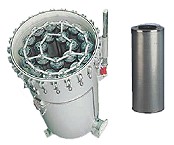
|
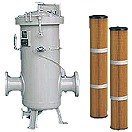
|
Micro Filter.
A single stage vessel, designed to remove solid contaminants from all hydrocarbon fuels, the particle size ranges from 1 to 25 microns. These solid contaminants, if not removed, will block the coalescer cartridges in the first stage of the filter water separator. This vessel is recommended to be installed prior to any filter water separator vessel to provide significant savings in maintenance and component costs.
|
|
Filter Water Separator.
A two stage vessel, designed to remove water contamination from hydrocarbon fuels using coalescence and gravity by coalescing and separating two immiscible liquids. By its design the coalescer cartridge will also remove solid contaminants. Coalescer cartridges are available in 1, 2, 5, 10, 15 and microns. This vessel is recommended to be installed at all storage and supply sites on both the inlet and outlet pipework.
|
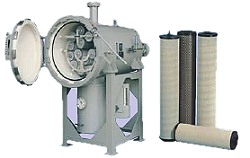
|
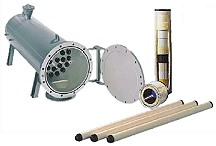
|
Monitor Filter.
A single stage vessel, designed to act as a safety fuse in the presence of water in the fuel. The cartridge contains a water absorptive gel (SAP) which absorbs any free water present in the fuel and blocks the flow causing a rise in the differential pressure as an indication of a problem. This vessel is recommended to be installed at all points of into plane refueling both fixed and mobile.
|
AIR APPLICATIONS
Compressed air receivers. Mobile sand, grit and media blast pots.
Air Receivers
Air receivers store and deliver air pressure when the compressor is not running, and also serves as a pulsation damper and moisture trap.
Because of its compressibility, air can store large amounts of energy which can be dangerous if released suddenly, for example if a vessel ruptures. Gill Engineering's design and construction of air receivers are therefore very stringent, and are built and tested strictly to the Australian pressure vessel Standards.
|
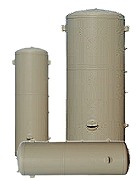
|
© Gill Engineering 2008 All rights reserved
|
|


